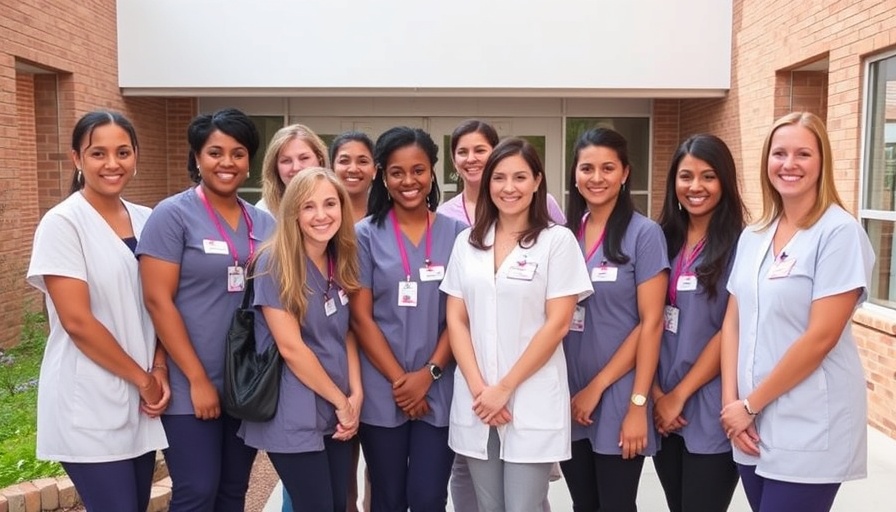
The Historic Expansion of Texas A&M’s Nursing Program
This fall, the Texas A&M University College of Nursing has made significant strides in addressing the critical shortage of nurses in Texas, welcoming its largest incoming class in the history of the program. With 170 new students enrolled in the traditional Bachelor of Science in Nursing (BSN) program, the college is poised to meet the growing healthcare demands of the state.
A Diverse Cohort With a Shared Purpose
The new cohort is not only a record in size but also showcases a tapestry of backgrounds and experiences. Students like Nate Blackshear and Kira Stankard exemplify the passion driving these future healthcare professionals. Blackshear's determination to advocate for improved health care access in rural communities stems from a personal tragedy, while Stankard’s inspiration comes from her older sister, a nurse.
Both students highlight a common theme: a desire to be integral to patients' well-being during crucial moments in their lives. Their stories resonate with many aspiring nurses who are motivated by personal experiences to make a difference in healthcare.
Addressing the Demand for Bachelor’s-Prepared Nurses
Dean Leann Horsley emphasizes that the increase in student intake is a direct response to Texas’s ongoing need for more bachelor’s-prepared nurses. “As a land-grant institution, we have a responsibility to help address the needs of Texas,” she stated, underscoring the role of the college in workforce development for the healthcare sector.
The strain on healthcare resources in Texas makes the expansion of the nursing program both timely and necessary. According to projections, Texas will require over 35,000 new registered nurses by 2030 to adequately staff its hospitals and community health facilities. This influx of nursing students not only aims to meet the existing gaps but also to prepare for future healthcare challenges.
Innovative Learning Opportunities for Aspiring Nurses
In conjunction with the traditional BSN program, the College of Nursing is continuing to evolve with the introduction of new programs. For instance, an additional 48 students are enrolled in the second-degree BSN program in Round Rock, catering to individuals who already hold a bachelor's degree in another field but wish to transition into nursing.
Additionally, the program will expand to include a traditional BSN option in McAllen starting in spring 2026, further enhancing accessibility and education for nursing students from diverse backgrounds.
Future Trends and Opportunities in Nursing Education
The increase in cohort size reveals an evolving landscape in nursing education, one that reflects broader shifts in healthcare. The growing recognition of nursing as a critical profession necessitating higher educational qualifications reflects national trends as well. Future predictions indicate that nursing roles will expand and evolve, addressing a variety of challenges not only in clinical settings but also in community health, policy-making, and education.
Emotional Connections and Community Impact
Nursing is not merely a career; it represents a profound commitment to serving others. As evidence, both Blackshear and Stankard’s stories illustrate how deeply personal motivations can shape professional aspirations. Their enthusiasm is infectious, encouraging others in their communities to see nursing as a noble and rewarding career path.
Moreover, the emotional connection that both students express towards their future roles highlights the importance of supportive environments like Texas A&M University, which fosters a sense of belonging and purpose. This nurturing atmosphere can play a pivotal role in not just their academic success, but in shaping the compassionate leaders of tomorrow’s healthcare workforce.
Conclusion: A Call to Action for Future Nurses
The record enrollment at Texas A&M’s College of Nursing is more than just a statistic; it symbolizes hope and a commitment to the health of Texas communities. As healthcare demands evolve, so too must the commitment of individuals to pursue careers in nursing. For those inspired by stories of resilience, compassion, and service, this may be the perfect moment to embark on your nursing journey. There’s never been a better time to consider making a career in nursing a reality.
 Add Row
Add Row  Add
Add 



Write A Comment